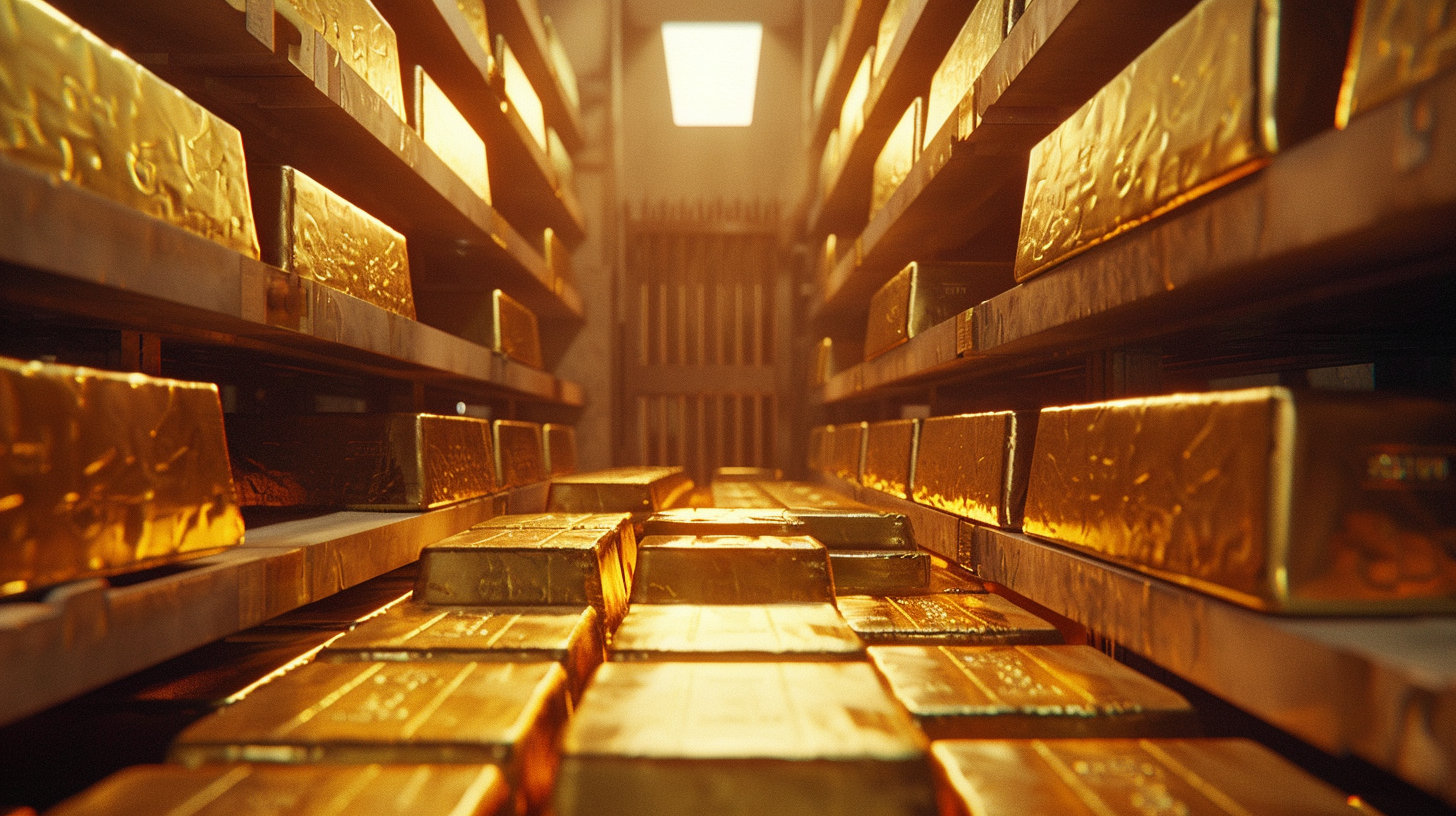| Key Points: – Gold trades near its record high, driven by weak US economic data and rising rate cut expectations. – Gold has surged 29% this year, with silver also gaining 34%, supported by Fed rate cuts and strong central bank purchases. – Investors anticipate further gains in precious metals due to geopolitical tensions and US monetary policy shifts. |
Gold prices are trading near record highs as weak US economic data strengthens the case for further interest rate cuts by the Federal Reserve. On Wednesday, bullion reached a peak of $2,670.57 an ounce before stabilizing at $2,657.73, reflecting a 29% rise this year. Silver has also seen substantial gains, increasing by 34% since January.
The recent spike in gold prices follows a report indicating a sharp decline in US consumer confidence, marking the largest drop in three years. This data has led swaps traders to increase bets on deeper cuts, expecting the Federal Reserve to lower rates by three-quarters of a point by the end of the year. Lower interest rates typically boost demand for gold, which doesn’t generate interest or dividends, making it an attractive asset in a low-rate environment. The rate cuts have also weakened the US dollar, further supporting gold by making it cheaper for international buyers.
Silver, often trading in tandem with gold, is benefitting from its dual role as both a precious metal and an industrial commodity. Its use in clean-energy technologies, such as solar panels, gives it additional exposure to the global economic cycle. As a result, silver prices have closely followed gold’s upward trajectory. Analysts from Standard Chartered and UBS expect silver to continue outperforming in the current market conditions, given the rising demand for industrial metals driven by global clean energy initiatives and the broader economic recovery.
Geopolitical tensions are also bolstering the demand for gold, with the precious metal seen as a safe-haven asset in uncertain times. With less than six weeks until the US presidential election, the financial markets are bracing for potential volatility. Political uncertainty, coupled with a broader global economic slowdown, has fueled a rush toward assets like gold and silver, which are considered more stable in times of turmoil.
Looking ahead, major banks, including J.P. Morgan, UBS, and Goldman Sachs, predict that gold’s upward trend will persist into 2025. Many of these forecasts are based on continued inflows into gold-backed exchange-traded funds (ETFs) and the expectation of further interest rate cuts by central banks around the world. For instance, J.P. Morgan anticipates that gold could reach $2,775 per ounce by next year, with a potential spike toward $3,000 in 2025. These bullish forecasts reflect a broader market sentiment that gold’s rally is far from over, particularly as the Federal Reserve continues its easing cycle to counter economic slowdowns.
While gold and silver investors are enjoying the current market rally, other sectors, particularly industrial metals, have also seen benefits. Beijing’s announcement of stimulus measures aimed at reviving China’s economy has led to increased demand for metals used in construction and technology, further supporting the price of silver. As these global economic trends continue to unfold, investors will keep a close eye on additional US data, such as the personal consumption expenditures gauge and jobless claims, to gauge the Federal Reserve’s next move.
